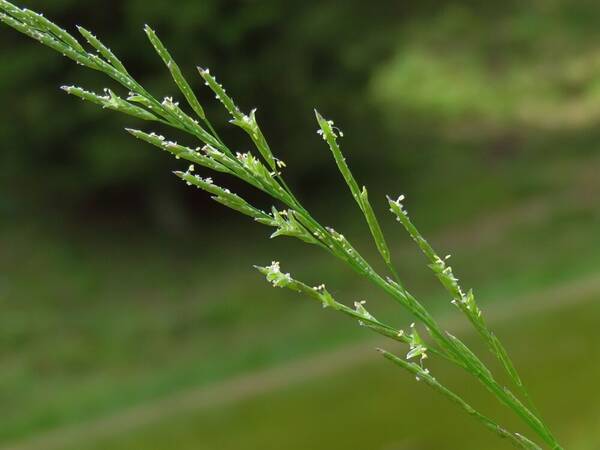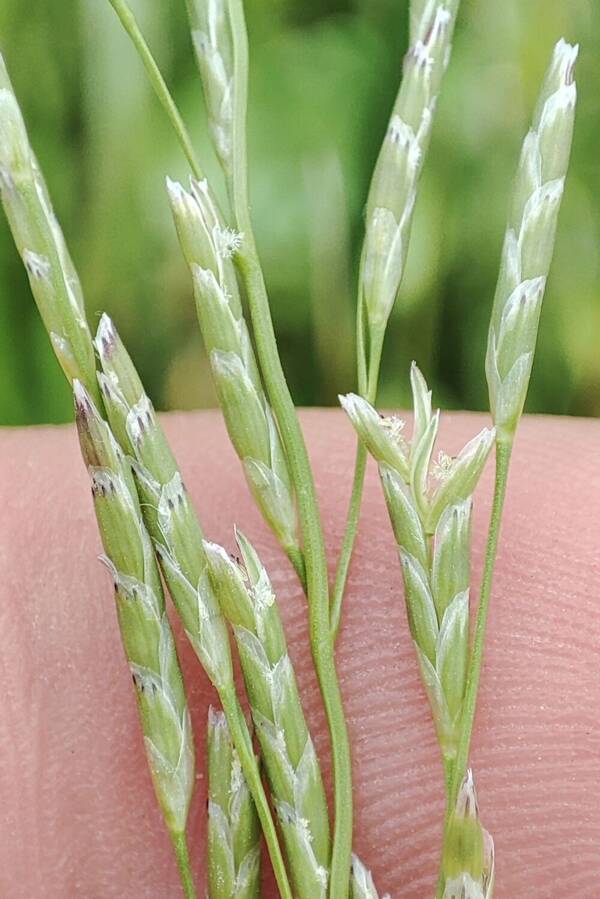Info
Subfamily: Pooideae
Genus etymology: Glyceria = "sweet" [Greek] refering to the taste of the grain of the type species
Species etymology: notata = "possessing a distinguishing mark" [Latin] refering to multicolored spikelets
Photosynthetic type: C3 (cool season)
Nativity: naturalized - accidental
First recorded in Hawaiʻi: 1916
Map

Inflorescence
 image credit: Alenka_Mihoric
image credit: Alenka_MihoricPlant
 image credit: Alenka_Mihoric
image credit: Alenka_MihoricSpikelets
 image credit: kisstamas
image credit: kisstamasDescription
Plants perennial. Culms 25-80 cm, rooting at the nodes. Sheaths usually scabridulous or hirtellous; ligules 2-8 mm; blades 5-30 cm long, 3-11(14) mm wide, abaxial surfaces scabrous, adaxial surfaces sometimes scabridulous to scabrous, sometimes sparsely hairy, sometimes papillose. Panicles 10-45 cm; branches 2-5 per node, eventually widely spreading; branches to 12 cm, with 5-15(19) spikelets; pedicels 1-6 mm. Spikelets 10-25 mm long, 1.5-3 mm wide, cylindrical and terete except slightly laterally compressed at anthesis, rectangular in side view, with 7-16 florets. Glumes obtuse to rounded; lower glumes 1-2.5 mm; upper glumes 2.5-4.5 mm; lemmas 3.5-5 mm, the submarginal veins often longer than those adjacent to the midvein, veins scabridulous, smooth or scabridulous between the veins, apices truncate to rounded, crenulate; paleas from slightly shorter to slightly longer than the lemmas, keels winged distally, apices bifid, teeth about 0.2 mm; anthers 0.8-1.5 mm. Caryopses 1.5-2.5 mm. 2n = 40.
(Description source: Barkworth, M.E., Capels, K.M. & Long, S. (eds.) 1993. Flora of North America, north of Mexico. Volume 24. Magnoliophyta: Commelinidae (in part): Poaceae, Part 1. Oxford University Press, New York. 911 pp. http://floranorthamerica.org/Glyceria_notata )